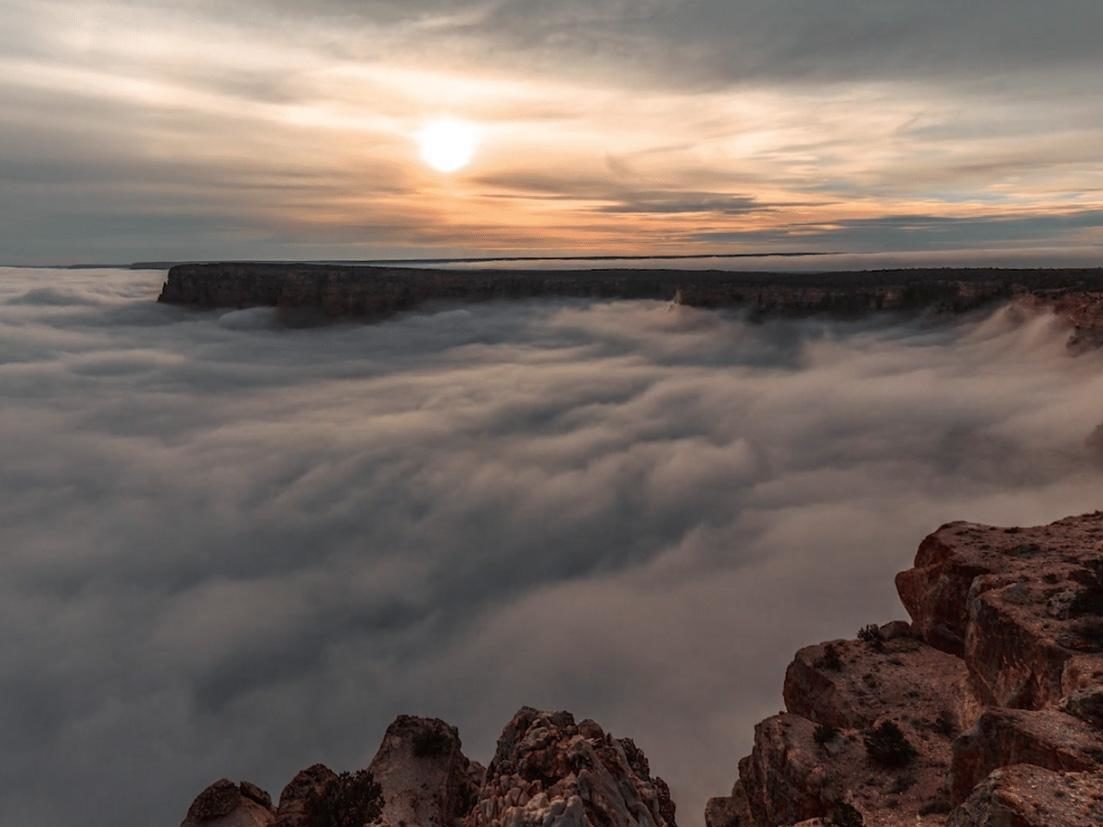
On an average day — the vast majority of days, actually — air temperature gets cooler as you go higher in the atmosphere. Put very simply, the ground is warm and the sky is not.
That's why clouds form in the sky. If moist air rises up from ground-level, it cools in the sky and the moisture condenses into clouds, much like the condensation on a cold glass of lemonade during a hot summer afternoon. Water vapour in the air condenses on the glass.
In rare circumstances, the opposite happens — cold air is at the ground and warm air is above it. The atmosphere flips over and all of a sudden the clouds are at your feet.
This is what's happening in the video of the Grand Canyon above, which Skyglow Project shared earlier this week. The temperature inside the Grand Canyon cooled rapidly during the night. Any humidity that was in the air condensed into clouds. Given how dry the Grand Canyon usually is, these incredible events happen only after rain.
The phenomenon is called a total temperature inversion. A cold layer of air is trapped at the base of the canyon and is capped by a warm layer of air.
The Department of Interior says fog filling the Grand Canyon is relatively rare, happening only once every several years.
Copyright The Washington Post



Reader Comments
to our Newsletter